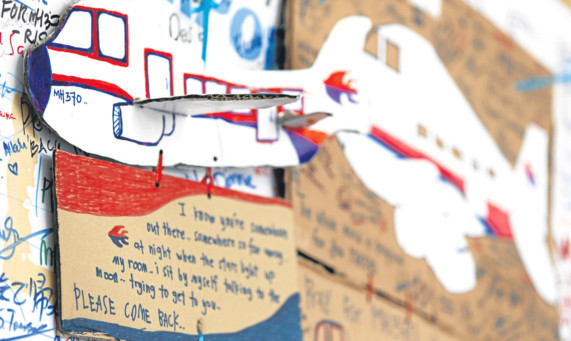
Aviate . . . Navigate . . . Communicate!
Three little words but probably the most important a pilot ever learns. Especially in a crisis.
I was reminded of them this week when I read an excellent blog posted by former airline pilot Chris Goodfellow, who was commenting on the plight of the missing Malaysian Boeing 777.
I say reminded because as someone who has a private pilot’s licence, I should have remembered this sequence and its importance when I first heard about the missing plane and again when it became clear that it had stopped communicating with Air Traffic Control, turned around and headed back south west in total silence.
They are after all three words drummed into you when you are learning to fly. But more importantly they should never have been forgotten by those charged with finding the missing plane and its fated crew and passengers.
Much time has passed and no one until recently seems to have looked at it from the pilot’s perspective, his view point. What would an experienced captain do in the event of an emergency, especially if it involved an on board fire?
Everything from hijacking to terrorism, pilot theft to being hit by meteors has been suggested and debated upon.
Conspiracy theorists have even suggested a missile strike by the Chinese, while cranks and there are many have blamed alien abduction. No one until recently has used common sense and looked for the simple solution.
This is where Chris’s reasoning seems spot on but sadly offers no hope of finding anyone alive.
He states that in the event of an electrical fire or heavy smoke the pilots would pull all the main busses (fuses) and restore them one by one to isolate any that may be causing the smoke. This would cause the plane to go silent.
They would also know, being experienced pilots, where the nearest and safest landing spot was, hence the dramatic turn south west to Palau Langkawi not Kuala Lumpur due to its mountainous terrain and it being further away.
In other words the heroic pilots were trying to get the aircraft on the ground as soon as possible while smoke was choking everyone on board including them. Again aviate, navigate and, if possible, communicate..
Why did it not land? Why was communication not re-established? Well, if they were on auto pilot as they dealt with a fire then it’s likely they ran out of time and collapsed through smoke inhalation.
Oxygen masks do not come down if there is a fire as the oxygen would explode.
Smoke hoods only last a few minutes and if the smoke was from the fire caused by an under-inflated tyre then it would have been impossible to put out.
Tragically it looks as if the plane flew on and on till it ran out fuel and plummeted into the Indian Ocean with 239 unconscious or lifeless souls on board.
I hope Chris Goodfellow is wrong, that I am wrong and that the pilot has, like an episode of Lost, flown everyone off to a secret island hideaway. I would be delighted for the families of those missing. Sadly I don’t think that will be the outcome.
What has been wrong, though, in the two weeks since MH370 disappeared, has been the handling of the families of the missing.
They have been treated appallingly and have been unnecessarily put through an emotional wringer by heartless and totally inept Malaysian authorities.
Maybe if they had applied logic, common sense and considered the pilot’s code of “aviate, navigate and communicate” in the first place instead of displaying crass stupidity, insensitivity and sensationalism, the bereaved would already be in the process of grieving instead of suffering unnecessarily.

Enjoy the convenience of having The Sunday Post delivered as a digital ePaper straight to your smartphone, tablet or computer.
Subscribe for only £5.49 a month and enjoy all the benefits of the printed paper as a digital replica.
Subscribe